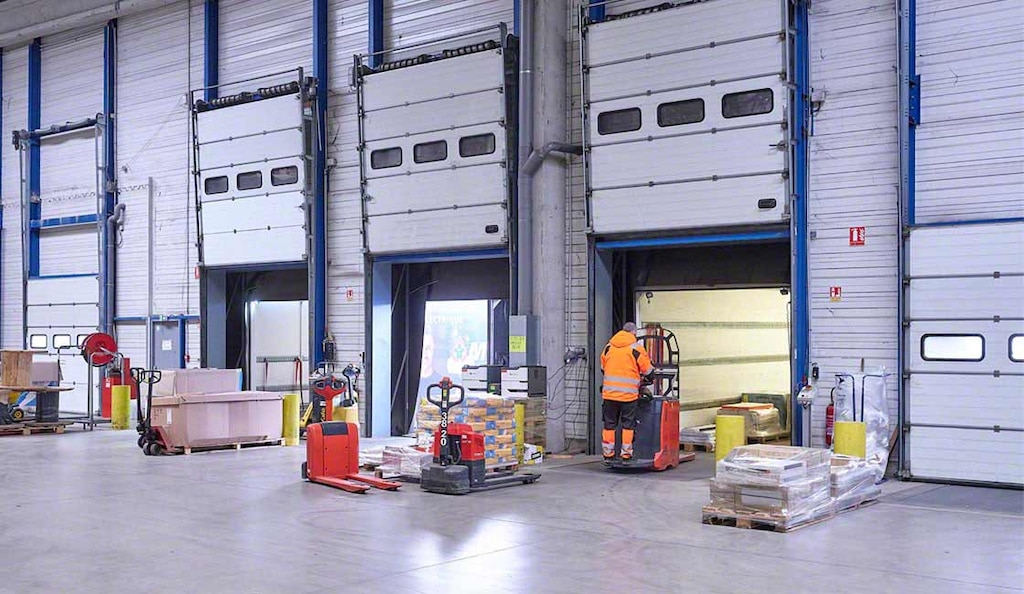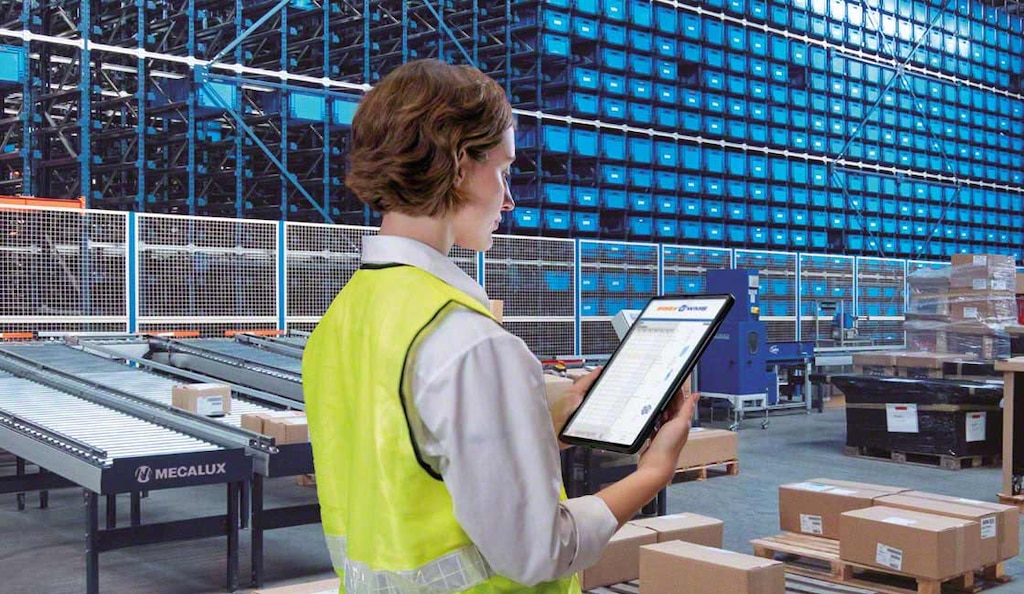
Return logistics: What it is and how to manage it efficiently
Return logistics has become a key factor in the relationship between companies and their customers. Far from being just an internal process, the way businesses handle returned products directly impacts consumer trust, satisfaction, and loyalty. This challenge also calls for innovation, coordination, and technological support. With the right management, returns can go from being a problem to a driver of growth and competitive differentiation.
In this post, we explain what return logistics is, the challenges it brings, and how to turn it into an opportunity.
What is return logistics?
Return logistics encompasses all the operations involved in managing goods that customers send back, whether because they arrived damaged, the wrong item was delivered, or the buyer simply changed their mind.
Return logistics covers every step from a customer’s request to send a product back until the merchandise reaches its final destination. This may include inspection, repair, or refurbishment in the warehouse before restocking; liquidation or donation; or permanent disposal.
In ecommerce, return volumes tend to be much higher than in brick-and-mortar retail. Why? Online shoppers can’t physically check merchandise before buying it, so what they receive doesn’t always match their expectations. In addition, easy return policies encourage people to buy more freely, knowing they can send items back with little hassle. That’s why mastering e-commerce returns management has become essential to maintaining both profitability and customer trust.
Difference between return logistics and reverse logistics
Return logistics can be viewed as the branch of reverse logistics that handles goods that customers return, both online and in physical stores. It covers everything from picking up the product at the customer’s home, a store, or a drop-off point to receiving and processing it in the warehouse (via inspection, refurbishment, or disposal). According to the Association for Supply Chain Management (ASCM), returns management is the most common reverse logistics process and “should represent a seamless, hassle-free experience in order to boost customer loyalty and brand image.”
Reverse logistics, however, goes well beyond dealing solely with returns. It includes activities such as waste collection and processing, recycling, material and packaging reuse, and handling surplus inventory (e.g., seasonal excess and discontinued merchandise). Numerous reverse logistics examples show that businesses must decide whether to restock, sell through secondary channels such as outlets, or recycle items. Its broader goal aims to optimize resources, extend product life cycles, and reduce environmental impact.

Main challenges of return logistics
Return logistics comes with several hurdles that companies must overcome to balance costs, boost internal productivity, and sustain customer satisfaction:
- Financial impact. Return logistics generates extra costs in transportation, storage, and inventory management. When return volumes grow, cost control becomes decisive for operational efficiency.
- Traceability. Large-scale returns require advanced inventory systems that track the status and location of every item in real time. Without clear visibility, decision-making becomes difficult.
- Operational complexity. Returns involve coordinating multiple steps and resources. To keep the process agile, businesses need well-defined procedures, proper planning, and — when returns become complex — digital tools to monitor both returned goods and stock available for sale.
- Customer expectations. Consumers expect fast, frictionless returns. With transparent return policies and clear communication about timelines and next steps, customers will always know what to expect.
- Quality control. Every item that heads back to the warehouse must be thoroughly inspected. Otherwise, defective goods might be restocked and cause new issues. Effective quality checks on arrival help detect faults, separate damaged merchandise, and ensure only compliant products re-enter the sales cycle.
- Regulations. Returns are subject to laws that vary by market. Taxes, tariffs, and item-specific handling restrictions can complicate the process even further — especially for international shipments.
Return logistics step-by-step
Return logistics plays a fundamental role in the circular economy, which aims to extend product life cycles and minimize waste. Consulting firm McKinsey notes that organizations can contribute to this model by simplifying goods dismantling, return, and evaluation to determine the right next step.
Each return follows a structured process that covers every stage from the customer’s request to the final outcome:
- Collection. The process starts when the merchandise is picked up — whether at the customer’s home, a store, or a drop-off point — and transported to the warehouse.
- Receipt and classification. Once received, the item is sent to a warehouse area dedicated to returns and sorted for restocking, repair, refurbishment, recycling, or disposal.
- Quality control. The goal is to recover as much value as possible:
- Restocking. Goods in perfect condition go back on sale.
- Repair. Defective items are fixed and returned to the market in optimal condition.
- Refurbishment or reuse. Merchandise suitable for second-hand sales or minor adjustments is reconditioned and sold at a discount.
- Recycling. Materials are reused in manufacturing new products or donated to avoid waste.
- Cannibalization. Some items are dismantled to extract usable parts for repairs or new production.
- Customer refund. Once compliance with the return policy is confirmed, the refund is issued.
- Redistribution or disposal. Refurbished or repaired products re-enter the sales channel. Goods beyond recovery are safely disposed of in an environmentally responsible way.

How to optimize return logistics in the warehouse
Mastering return logistics in the warehouse is crucial for reducing costs and enhancing customer satisfaction. To achieve this, retailers should implement strategies that streamline the process:
- Returns tracking. Monitoring returned items helps identify recurring issues, detect quality problems, and limit failed sales.
- Immediate sorting and inspection. Warehouse teams should assess returns upon arrival, checking packaging, labeling, physical condition, and reason for the return. Proper staff training speeds up the process and minimizes errors.
- Digital warehouse control. Implementing a warehouse management system (WMS) is a must for effective return operations. By scanning each item’s barcode, the software guides associates through the steps according to company policy and automatically assigns storage locations. This improves control, speeds up inspections, and ensures real-time traceability. With automated classification and visibility, merchandise re-enters inventory faster, cutting down on errors and processing times.
In an increasingly tech-driven environment, innovative returns management solutions are ushering in a more connected, automated, and transparent logistics era. Today, WMS software optimizes return flows and minimizes errors. But advancements are moving beyond that: research from Auburn University and Northeastern University shows that technologies such as the Internet of Things, artificial intelligence, and blockchain are transforming return logistics. These tools enable full product traceability, automate repetitive tasks, and reinforce transparency throughout the process. The researchers also highlight that reverse logistics not only improves efficiency but also strengthens corporate sustainability and social responsibility. By adopting green logistics practices, retailers boost their reputation and actively contribute to a more sustainable future.
Real-world examples of efficient returns management
Digitalization, particularly the adoption of WMS software, streamlines return logistics. Below are examples of businesses that have restructured their returns processes with this technology:
- Rouje. The French fashion brand has expedited its return logistics operations with the Mecalux Group’s Easy WMS. “Returns arrive in the morning. The software allows us to restock merchandise so it’s available for sale again the same day,” says Rouje’s Project Manager. When associates scan each item’s barcode, the WMS guides them according to the company’s returns policy, automatically organizing where to slot each product.
- Gibon. This European fashion e-tailer deals with a large volume of returns — accounting for 20% of daily inbound goods — with Easy WMS. The system directs associates via barcode scanning: items in good condition go back into inventory, while defective ones are repaired.
- Hipanema. The French jewelry and prêt-à-porter brand has modernized its returns operations using the Mecalux Group’s software. Previously, returned merchandise was temporarily set aside until its next steps (storage, repair, etc.) were decided. Now, with Easy WMS, each product is automatically assigned to a specific shelf location, improving tracking and speeding up inspections. “The process is much more efficient, and everything is better organized,” says Hipanema’s Associate Director.
As seen in these cases, warehouse technology can turn a complex process like returns management into an effective, controlled, and customer-oriented operation.
A bridge to customer satisfaction
Return logistics can no longer be seen as a mere set of operations. Its impact goes beyond the warehouse, directly influencing customer trust, satisfaction, and loyalty. When returns are done right, companies strengthen their relationship with consumers, transforming it into an opportunity to enhance the buying experience and reinforce brand image. By relying on advanced technology and software solutions, organizations can turn this challenge into a competitive advantage — making their operations faster, greener, and more cost-effective.
